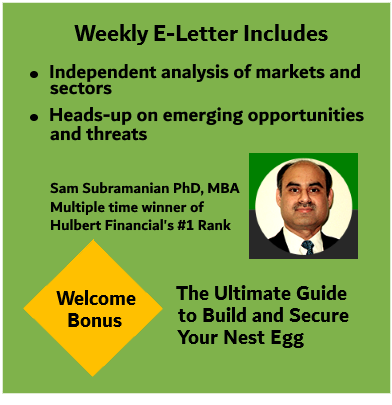Cash-Rich Sector Plays, I discussed how software companies, health-care providers, and apparel retailers stand out as high-cash play opportunities. What a firm is likely to do with excess cash depends on the company and its situation. Some may initiate or increase dividend payments and share buybacks, while others may use the cash for organic growth or acquisitions. The combination of a high-cash balance and an attractive valuation could also make a company a takeover candidate.
In this second part, I cherry-pick some companies in retailing and health care to illustrate how investors with different objectives can hone in on cash to shop for investment ideas. I’ve chosen companies in the enviable position of having significant cash and short-term investments on their balance sheets, with the potential to handily increase their return on capital employed (ROCE) by using their excess cash. Since investors in companies with excess cash run the risk that inept management teams might waste this resource on ill-conceived, value-destroying projects, I intentionally left out companies with a checkered history of acquisitions or mergers.
Did Your Nest Egg Gain from the Coronavirus Crash?
 Sick buying high & selling low? Fed up of the fees you pay? Tired researching investments? End your financial pain now. You have the opportunity to earn superior returns with low expenses, low risk, and minimal effort.
Sick buying high & selling low? Fed up of the fees you pay? Tired researching investments? End your financial pain now. You have the opportunity to earn superior returns with low expenses, low risk, and minimal effort.
For a change, you will actually buy low, sell high, and keep what you earn. Register free and test drive AlphaProfit Premium Service investment newsletter now.
To provide insight on how specific companies in these sectors are likely to use their excess cash, I break them down into three categories:
Growth seekers: Companies that seek organic growth as well as growth through acquisitions.
Stakeholder repayers: Companies that return capital to equity as well as debt holders.
Merger candidates: Companies that are likely takeover targets.
Most of the cash available with Bed Bath & Beyond (Nasdaq: BBBY), Varian Medical Systems (NYSE: VAR), and Forest Laboratories (NYSE: FRX) is likely to be funneled to fulfill the strong growth aspirations of these companies.
Bed Bath & Beyond has a squeaky-clean balance sheet free of long-term debt. It has an enviable record of almost quadrupling its earnings per share from 1998 to 2003. The $815 million in cash, coupled with ample opportunities for growth in home goods retailing, position BBBY to nicely grow its store base in the coming years. Trading at a PEG ratio of less than 1.0, BBBY shares are an intriguing selection for investors seeking growth at a reasonable price.
Many of the positive attributes of Bed Bath & Beyond also apply to Varian Medical, the manufacturer of cancer-care systems. With relatively low long-term debt of less than $60 million, it has proven to be an earnings powerhouse after Varian Associates spun off its semiconductor equipment business and made Varian Medical the surviving entity in 1998. While organic growth has been impressive, VAR has not been shy of acquisitions. Using $18 million of its cash, Varian acquired OpTx, a supplier of oncology practice software earlier this year. Varian’s shares trade at a PEG ratio of about 1.35, and its war chest amounts to about $340 million.
With a PEG ratio less than 0.9, shares of Forest Laboratories are better suited for risk-tolerant growth investors. Cumulative earnings growth for the five-year period ending in 2003 was a mightily impressive 750%. New York State Attorney General Eliot Spitzer’s request for information concerning Forest’s off-label clinical trials has weighed heavily on Forest’s shares recently. Looking ahead, the active ingredient of Forest’s depression drugs loses patent protection next year, and competition in this space is intensifying, with Eli Lilly’s (NYSE: LLY) launch of Cymbalta on August 24. Forest management has a formidable $1.8 billion cash stack at its disposal to try to maintain the company on its growth track.
Stakeholder repayers
With cash in excess of growth opportunities, retailers Gap (NYSE: GPS) and Abercrombie & Fitch (NYSE: ANF) are returning capital to their stakeholders. But income-oriented investors will likely have to wait awhile for the dividend yield to reach enticing levels.
The management at Gap has made significant strides in paying back debt. Long-term debt has been slashed from $2.9 billion in August 2003 to $2.3 billion as of May 2004. Further debt reduction is in the offing as the company seeks to regain its investment grade credit rating. In all probability, the $1.4 billion in senior convertible notes will be called after March 2005 and the resulting dilution offset by share buybacks. Gap’s dividend, which has been stuck at 8.8 cents per year since 1996, could get bumped up subject to renegotiation of the current credit facility that restricts cash dividends to this amount. Until such time, Gap shareholders will have to remain contented with the current dividend payment. Gap shares currently yield 0.45% — better than nothing, but much lower than what Fool dividend guru Mathew Emmert looks for in his Motley Fool Income Investor stock picks. Trading at a forward P/E of about 13, though, Gap is an alluring selection for the long-term investor.
For investors seeking the safety in earnings growth driven by share buybacks, Abercrombie & Fitch looks interesting. In February 2004, Abercrombie initiated cash dividend payments, and in July 2004 it announced it would buy back 6 million shares over time. The company currently sports a 1.70% dividend yield. A combination of about $540 million in cash reserves, erratic trends in same-store sales, and subdued growth prospects are likely to make it increasingly look to share buybacks to shore up EPS growth.
Merger candidates
The merger of excess cash, industry dynamics, and attractive valuation leaves Humana (HYSE: HUM) and Sears (NYSE: S) with the possibility of being acquired.
Health-care provider Humana is in the midst of a space where consolidation activity is rampant. Recently, Oxford Healthcare was acquired by UnitedHealth (NYSE: UNH), and Anthem (NYSE: ATH) and WellPoint Health (NYSE: WLP) are seeking to merge. Humana’s cash vault of $2.5 billion is in excess of regulatory requirements. With shares trading at a forward P/E of about 10, Humana could be next in line.
Share buybacks at Sears continue unabated. The company has reduced its share base to 212 million from 320 million at the end of 2001. Despite this aggressive reduction in share count, per-share earnings have hardly budged over the past couple of years. Meanwhile, cash has swelled to $4.2 billion. Sears seeks to acquire 61 stores from Kmart (Nasdaq: KMRT) to develop its off-mall concept. Notwithstanding the retailer’s effort to shore up its earnings through this concept, Sears’ growth pipeline appears limited. Sears’ cash hoard of $20 per share coupled with the forward P/E of about 11 makes the company a takeover candidate.
For growth as well as value investors, focusing on company cash hoards and cash-generating ability is a profitable endeavor for seeking investment ideas. Investors can better meet their investment objectives by evaluating a company’s options for using cash. Bed Bath & Beyond, Varian Medical, and Forest Laboratories stand to meet the tests of growth-seeking investors. While Gap and Abercrombie & Fitch are flush with cash, income-oriented investors will have to look elsewhere (Income Investor might be a good place to start). For the value conscious, Humana and Sears could well be worth their money.
Company Cash and ROCE Data

Data source: Yahoo! Finance, CFO Magazine (August 2004).
* Based on 2003 pretax operating profits.
** Calculated assuming excess cash is used to reduce the amount of capital employed.
*** Difference between adjusted ROCE and 2003 ROCE.
Want to learn more about companies with excess cash on hand? In part one of this two-part series, Sam Subramanian names three cash-rich sectors to keep an eye on.
Check out the meaty dividend-paying stocks that Mathew Emmert digs up each month in Income Investor. A free trial is yours for the asking.
Guest columnist Sam Subramanian is the managing principal of AlphaProfit Investments, a Houston-based investment research firm. Sam does not own shares in any of the companies or mutual funds mentioned in this article. The Motley Fool is Fools writing for Fools.



 DEC. 1993 to DEC. 2023
DEC. 1993 to DEC. 2023





